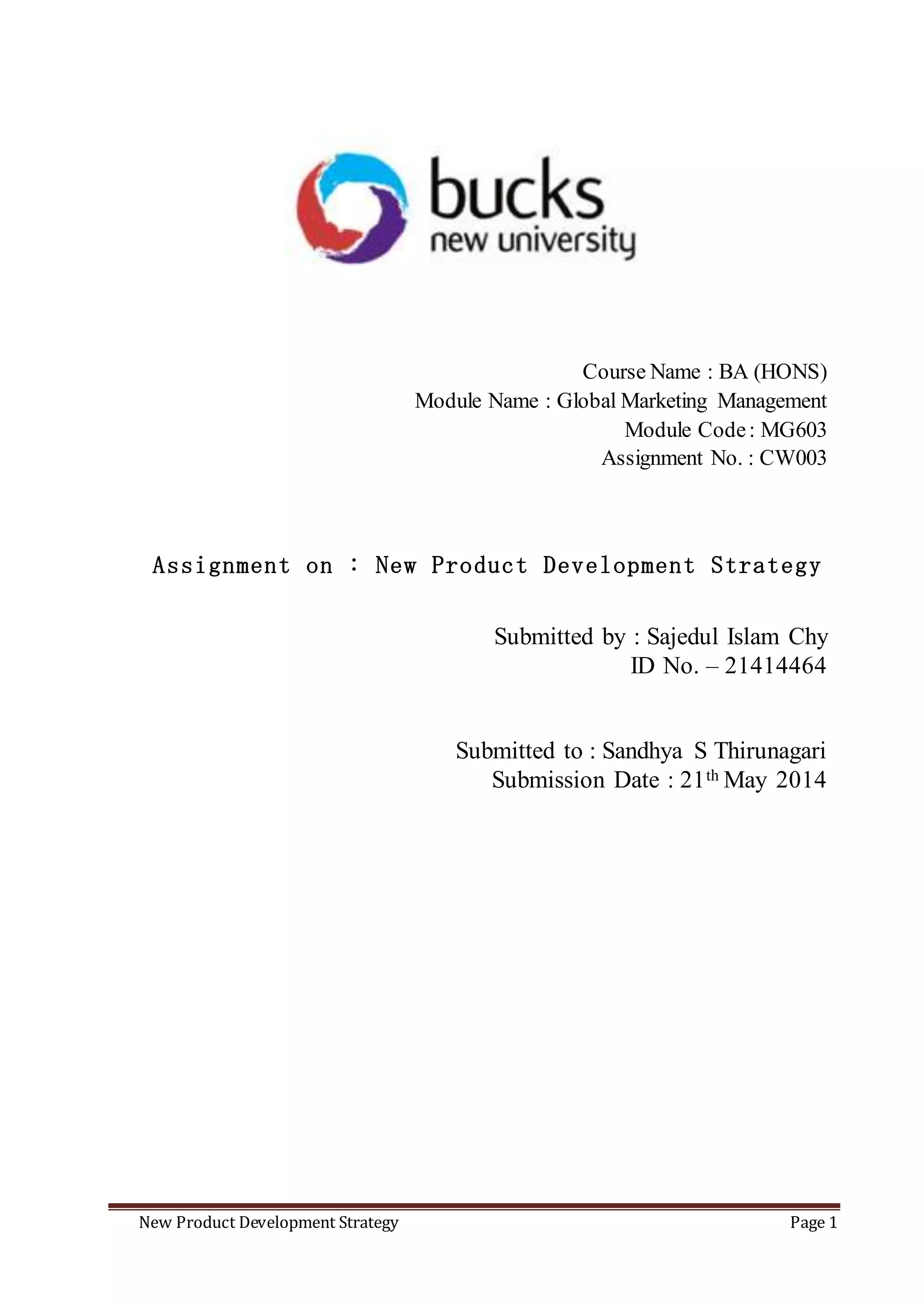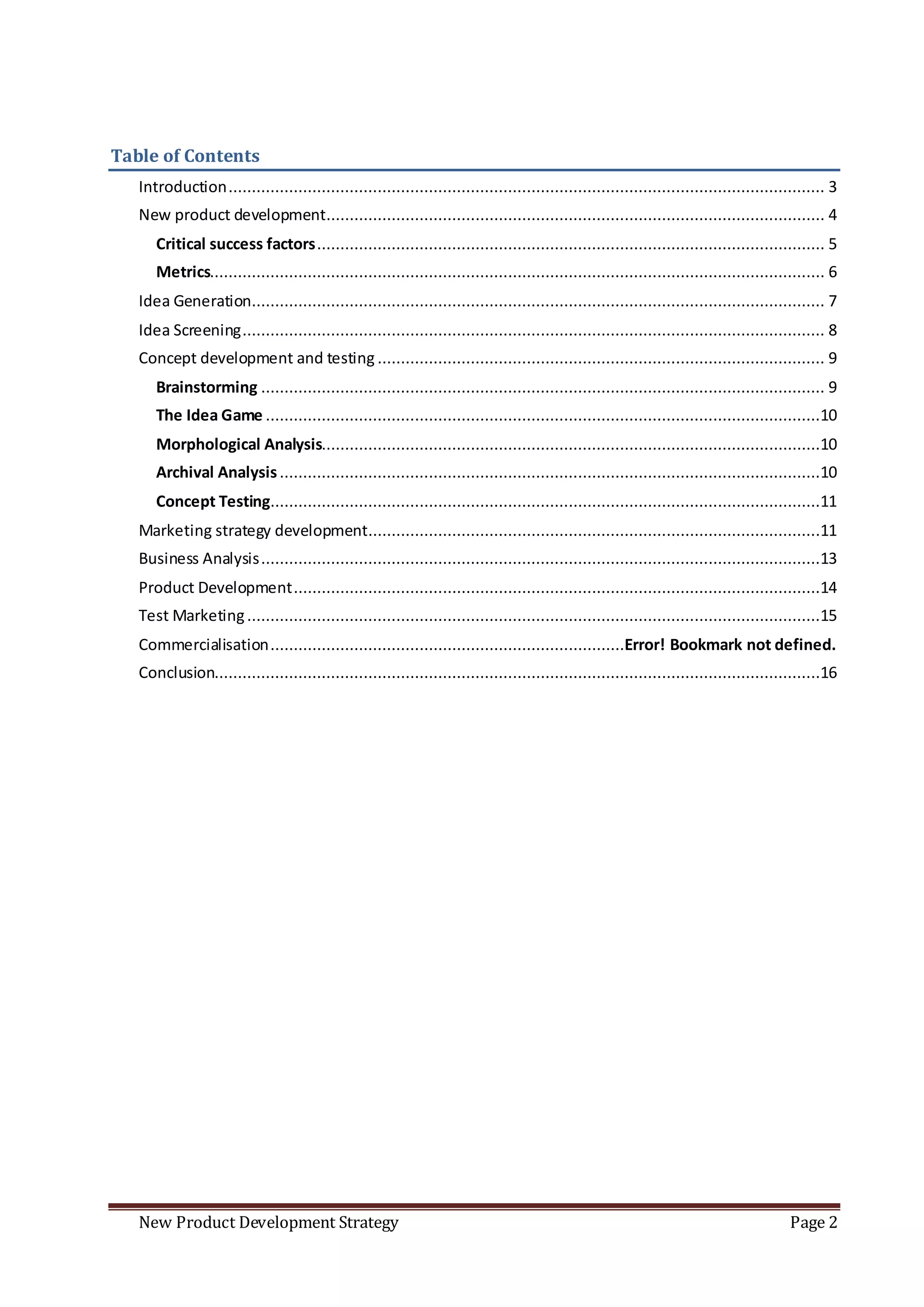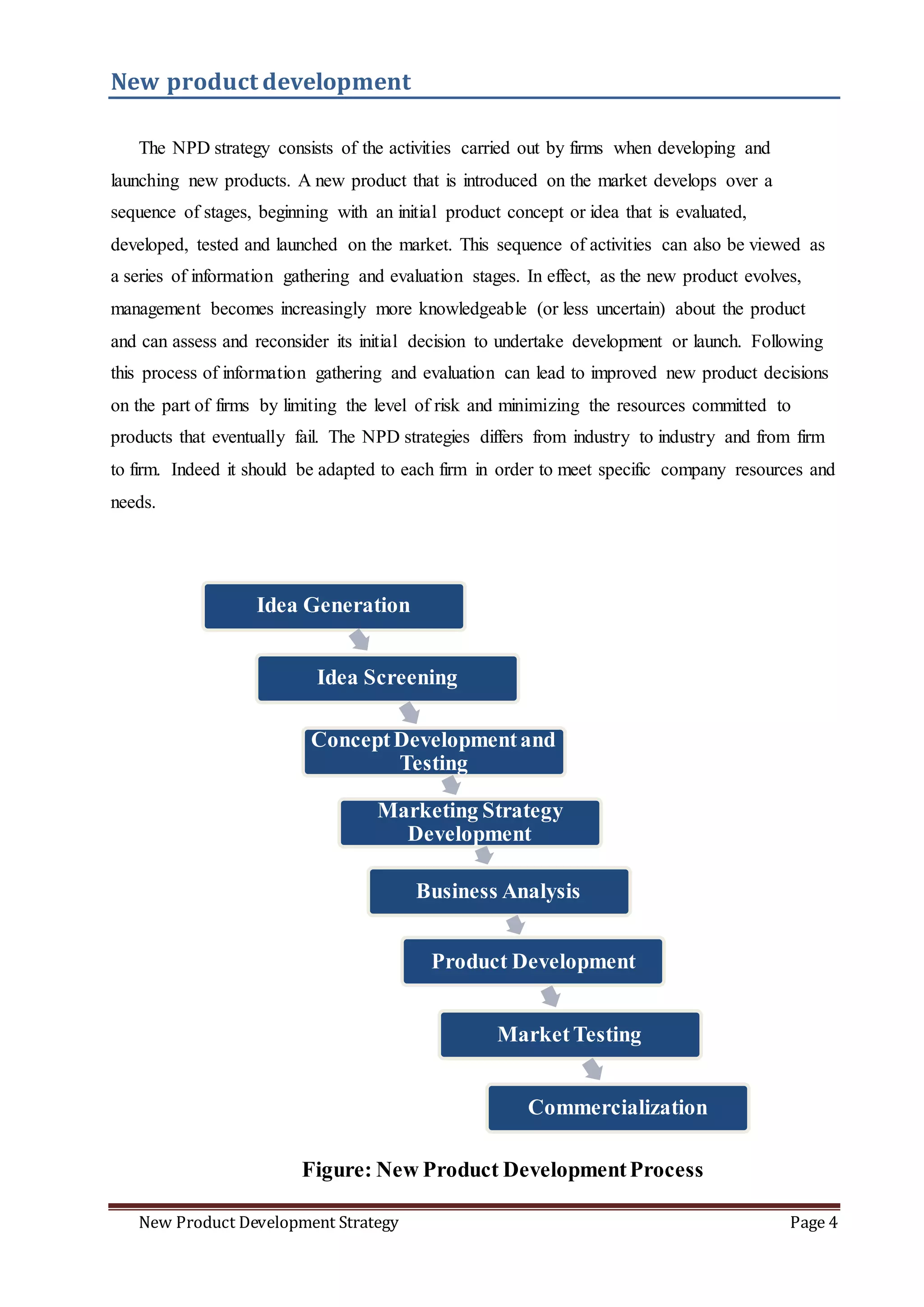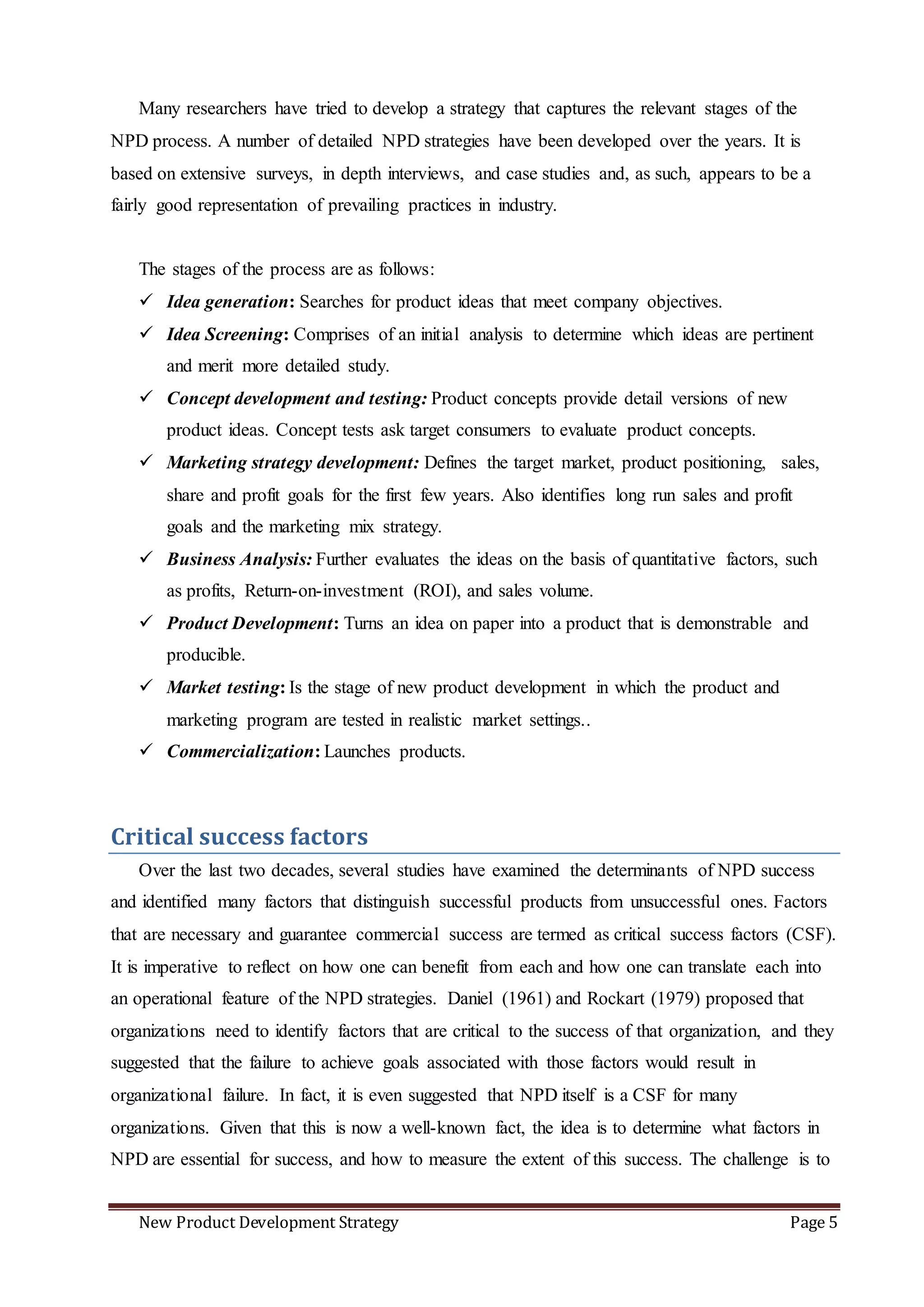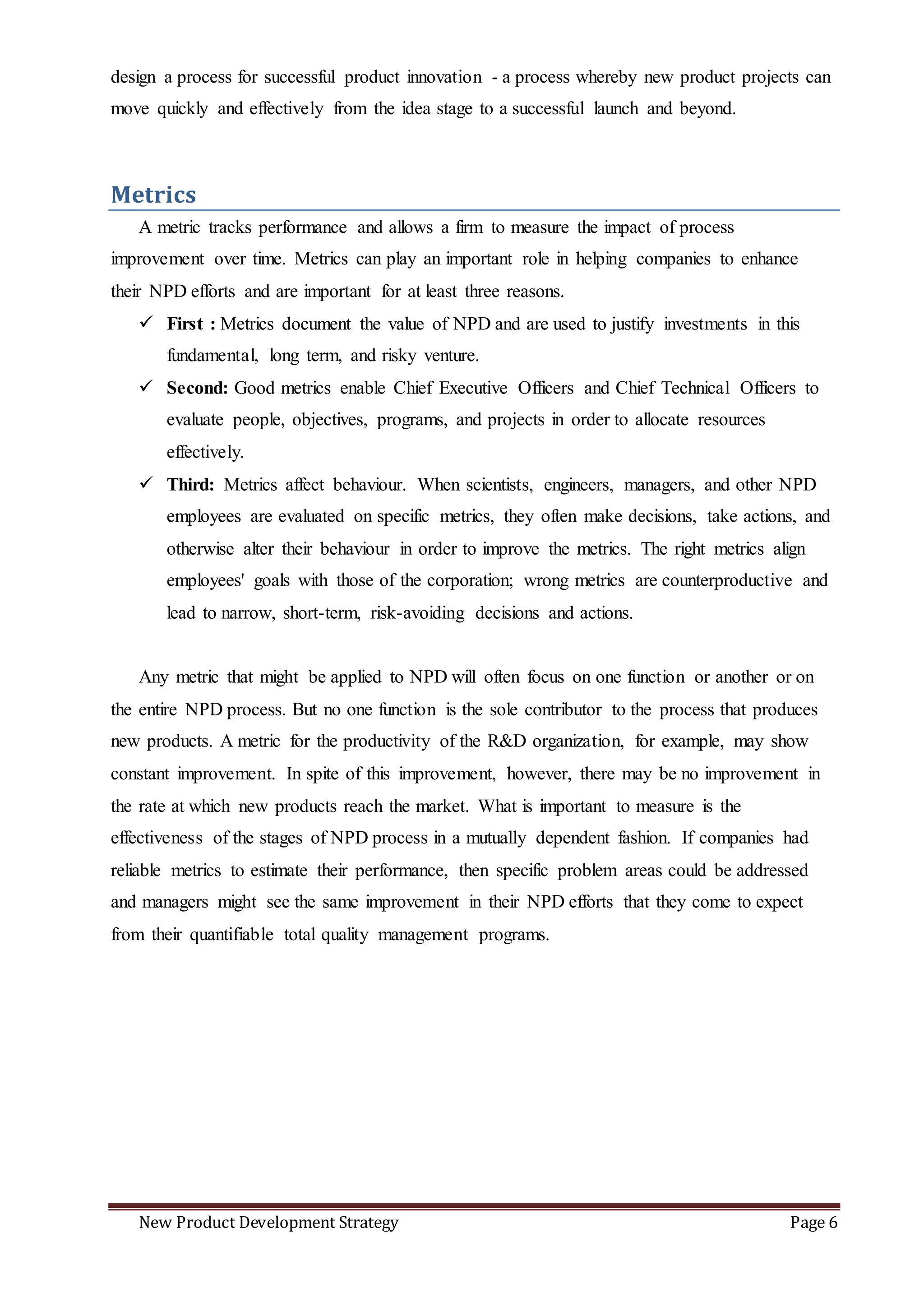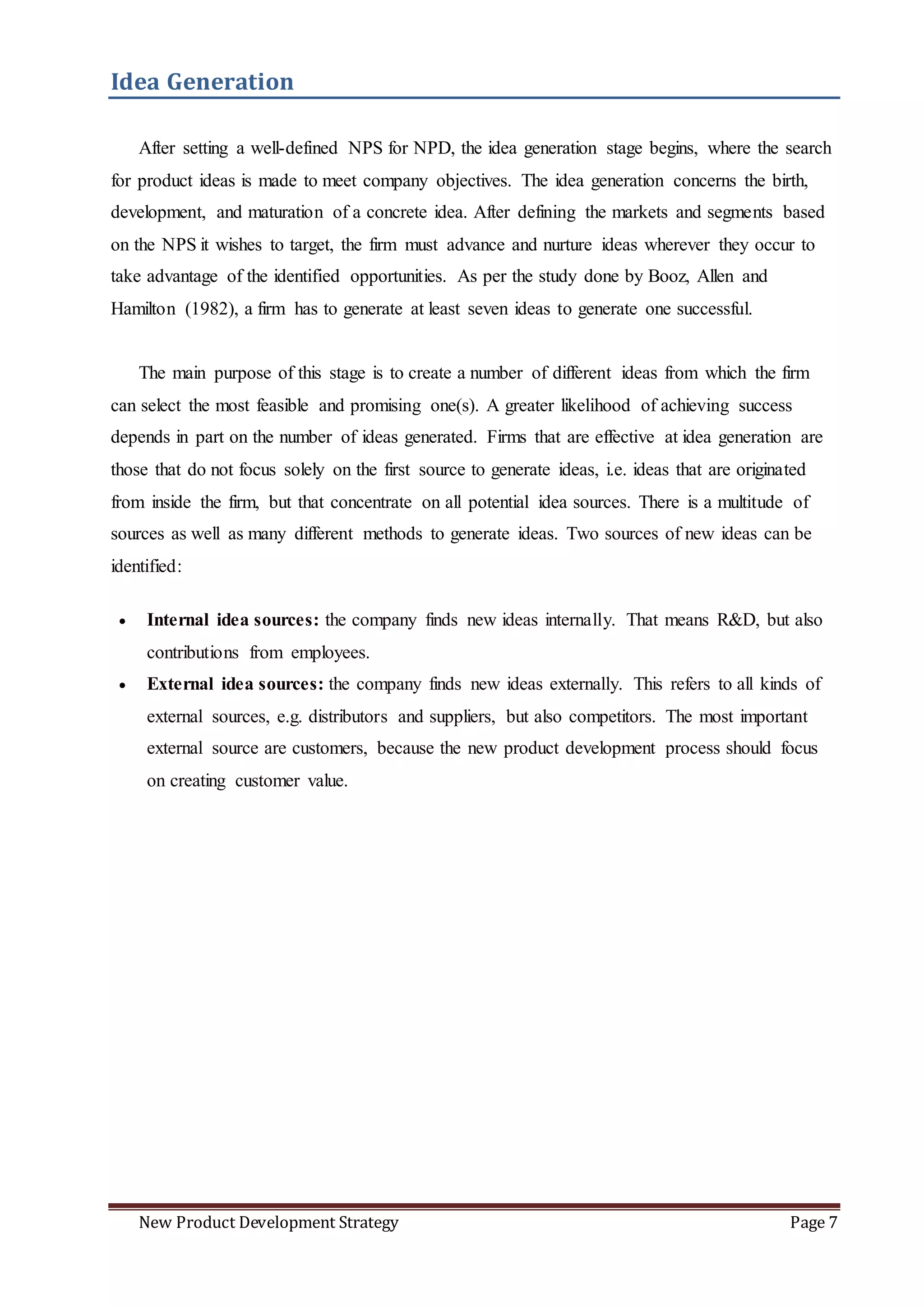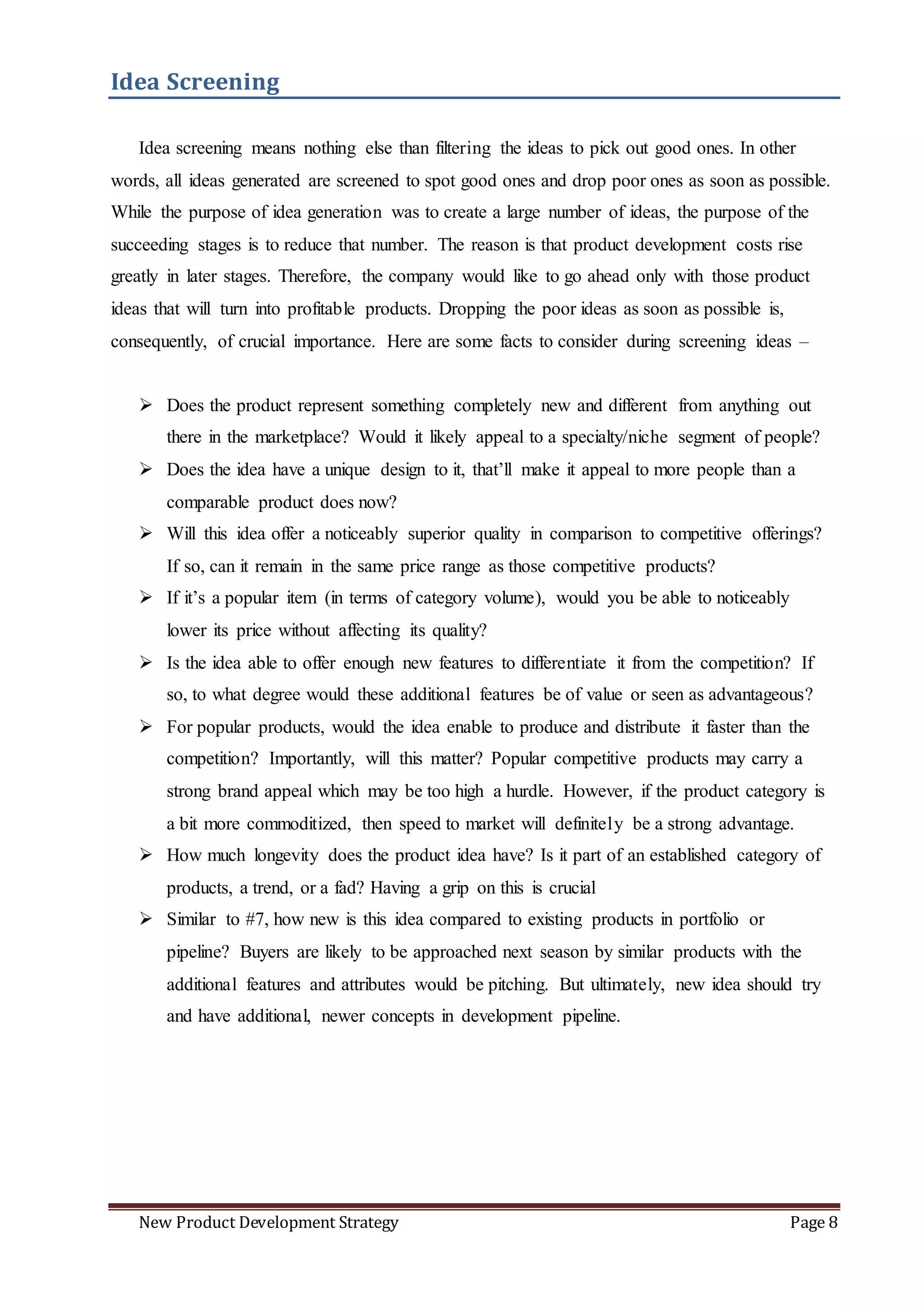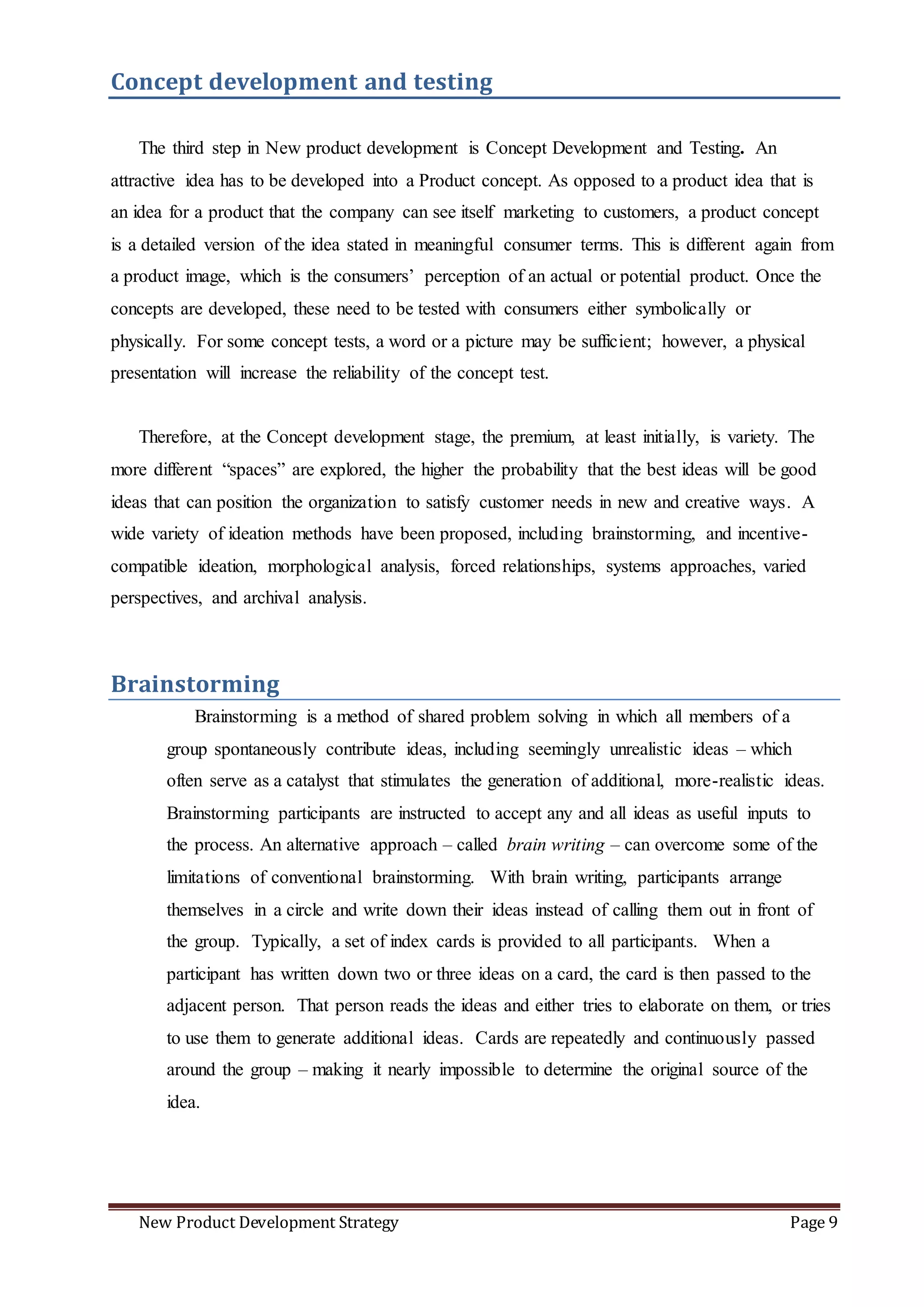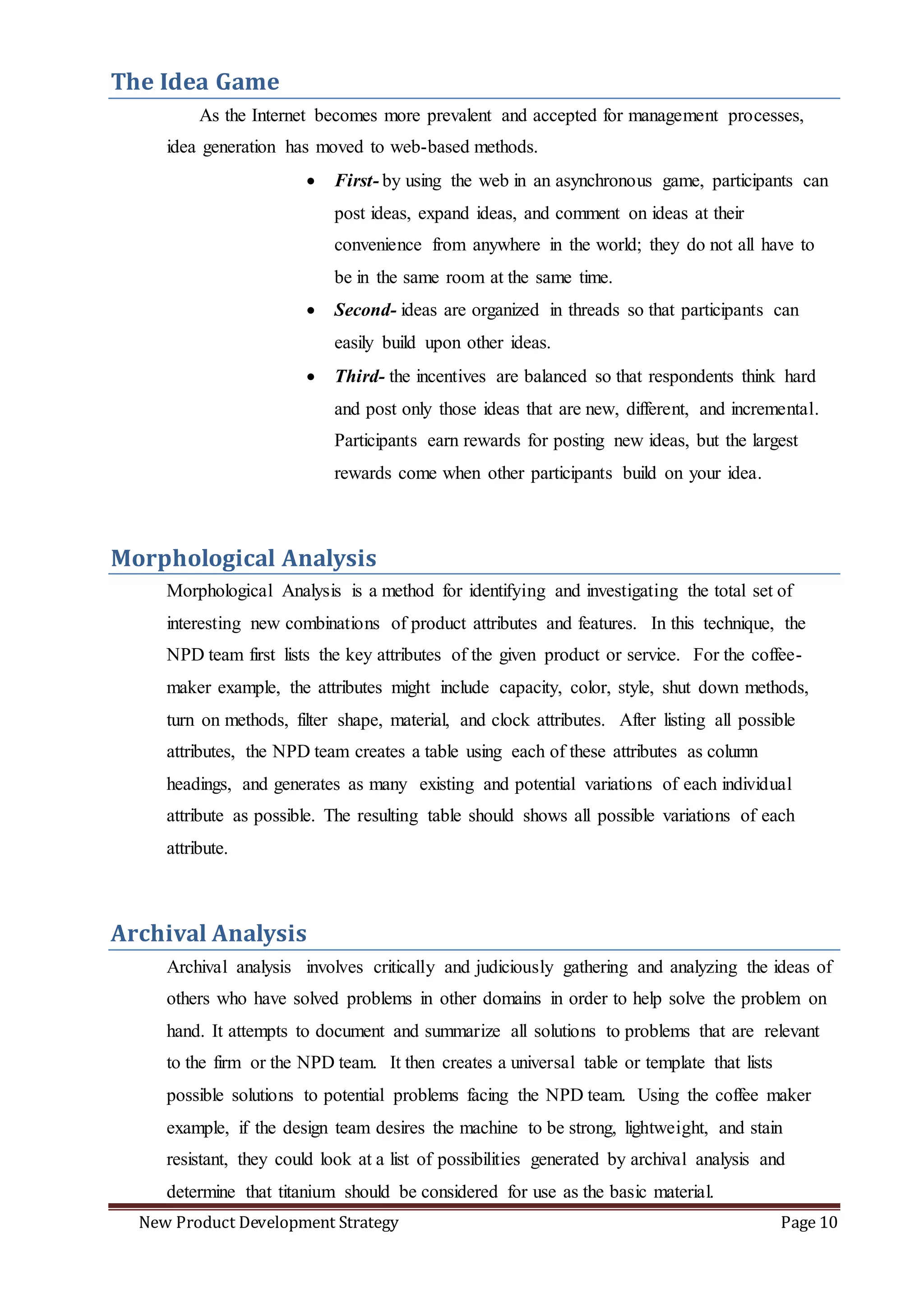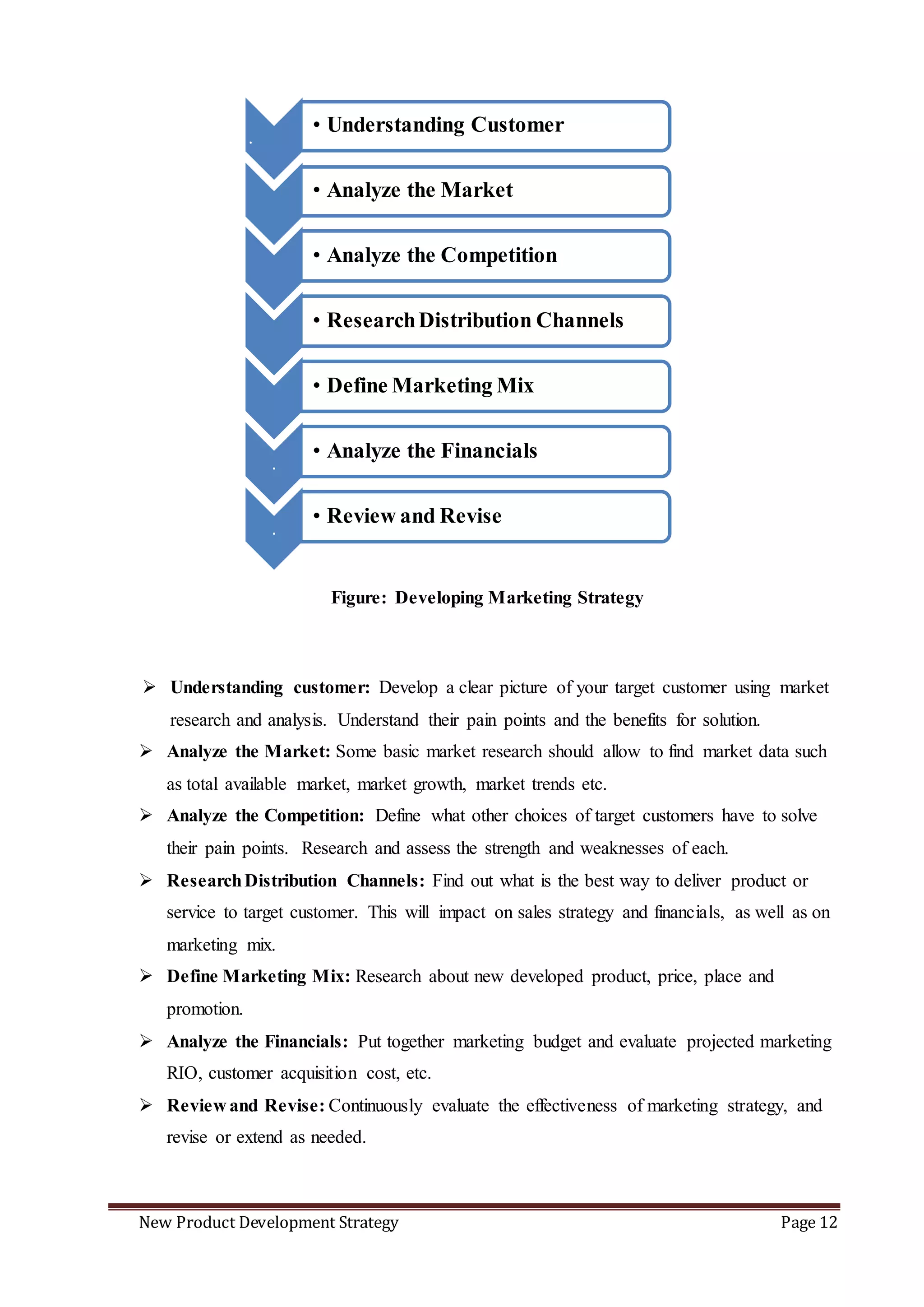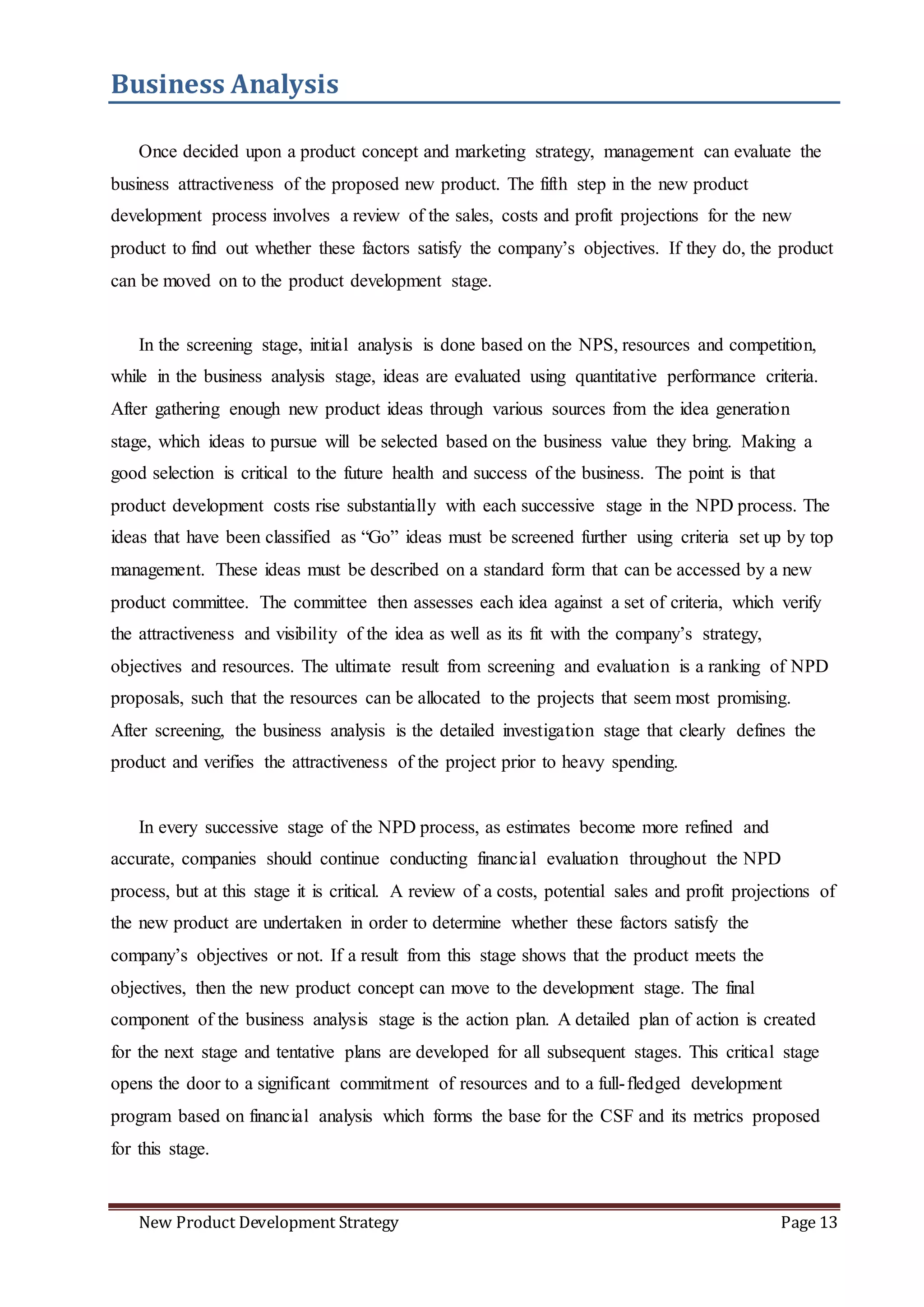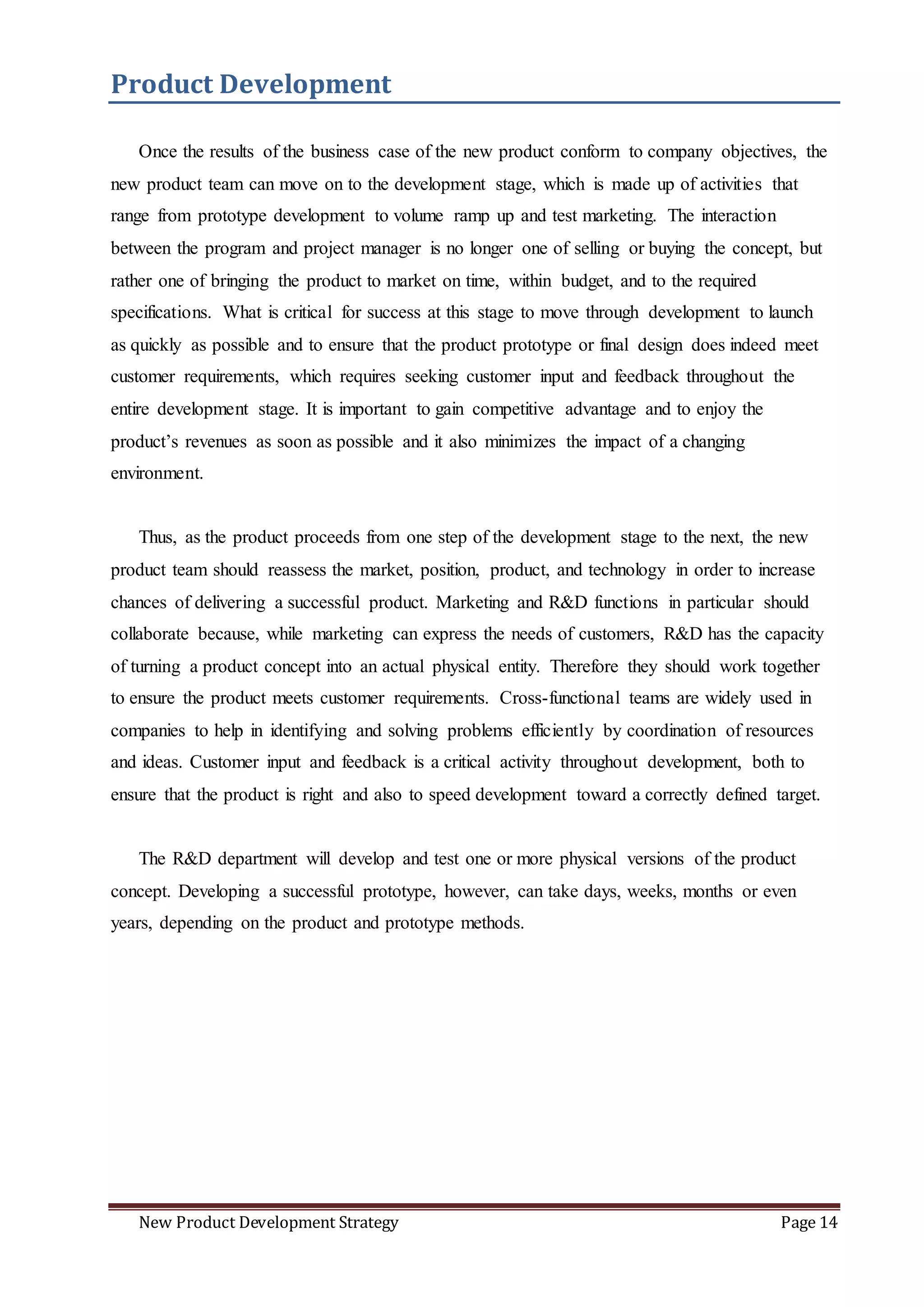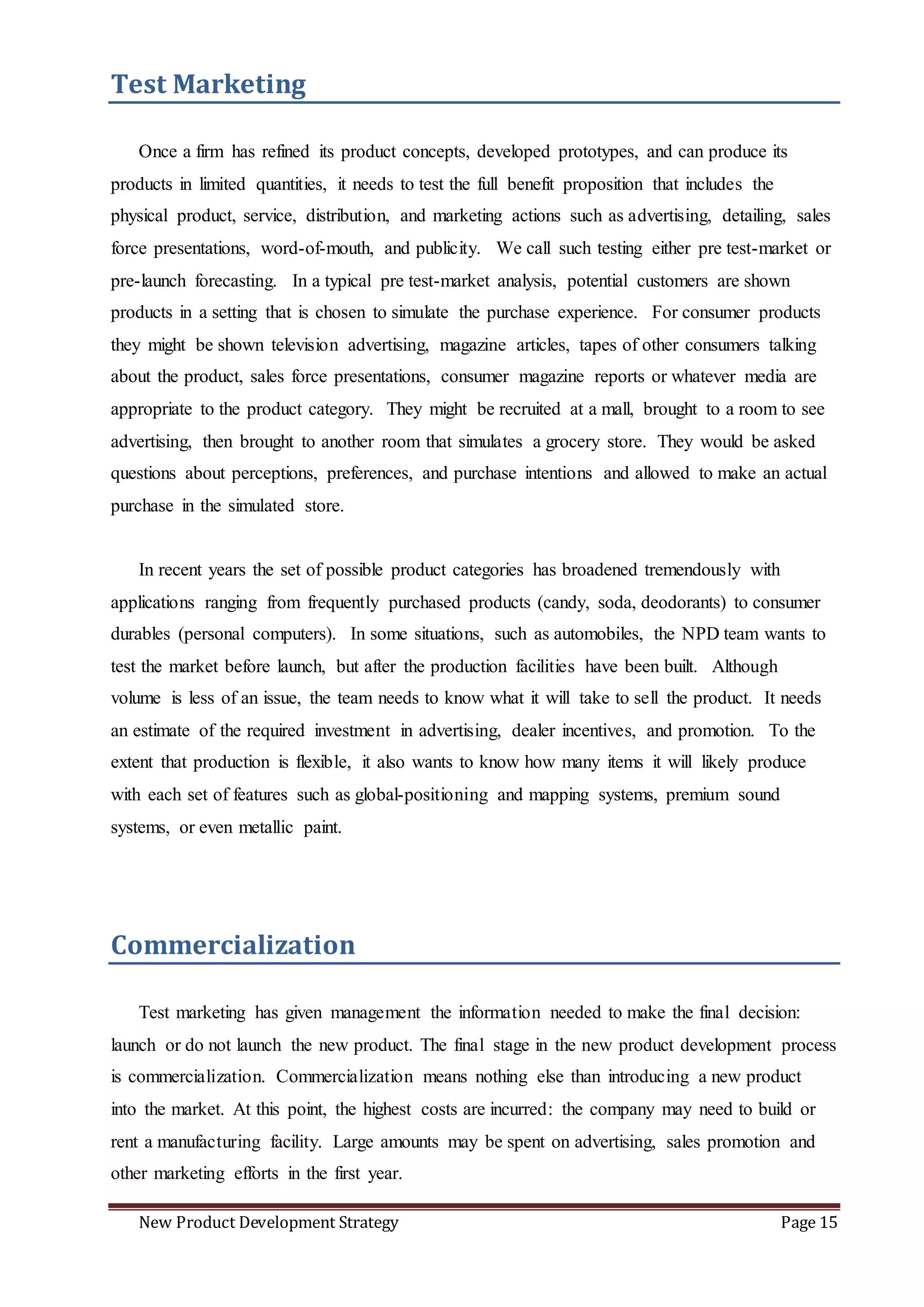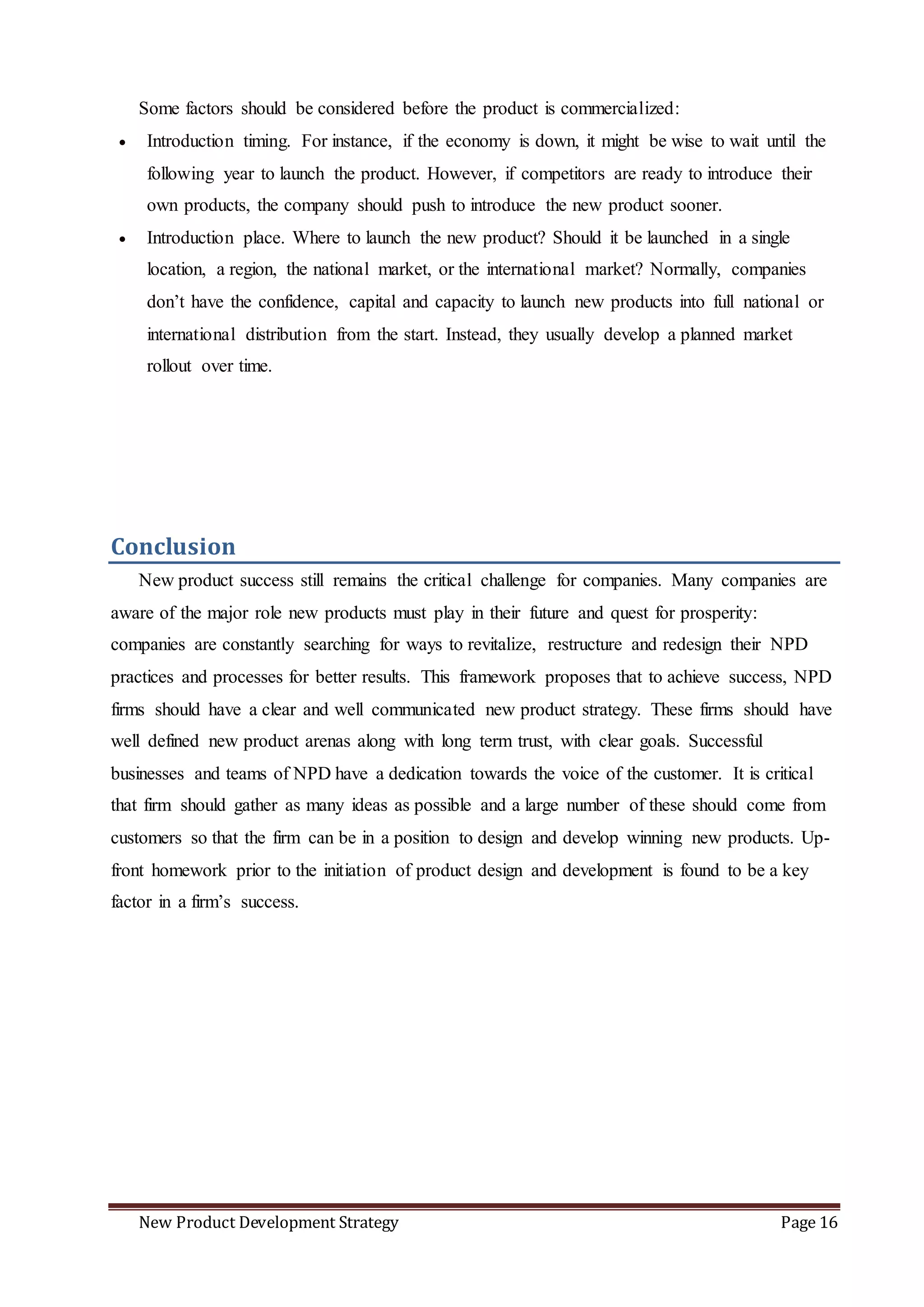The document outlines the key stages of new product development strategy:
1. Idea generation, screening, and concept development and testing to generate and refine product ideas. Methods mentioned include brainstorming, morphological analysis, and concept testing.
2. Developing an initial marketing strategy based on the product concept to introduce the new product, including defining the target market and marketing mix.
3. Further business analysis, product development, and market testing to evaluate ideas quantitatively, develop the product, and test the product and marketing program.
4. Commercialization by launching successful products. Critical success factors, metrics, and the stages of the new product development process are also discussed at a high level.
